Here’s my guide to visiting the Museum of the Medici Chapels. It’s one of the best museums and most hallowed historic sites in the beautiful rusticated city of Florence.
Most importantly? The chapels’ New Sacristy holds seven Michelangelo sculptures — the most you’ll find in Florence.
The sculptures are sublime, a stunning combination of artistic virtuosity and symbolism set amid theatrical architecture. This fact alone makes the Medici Chapels well worth a visit.
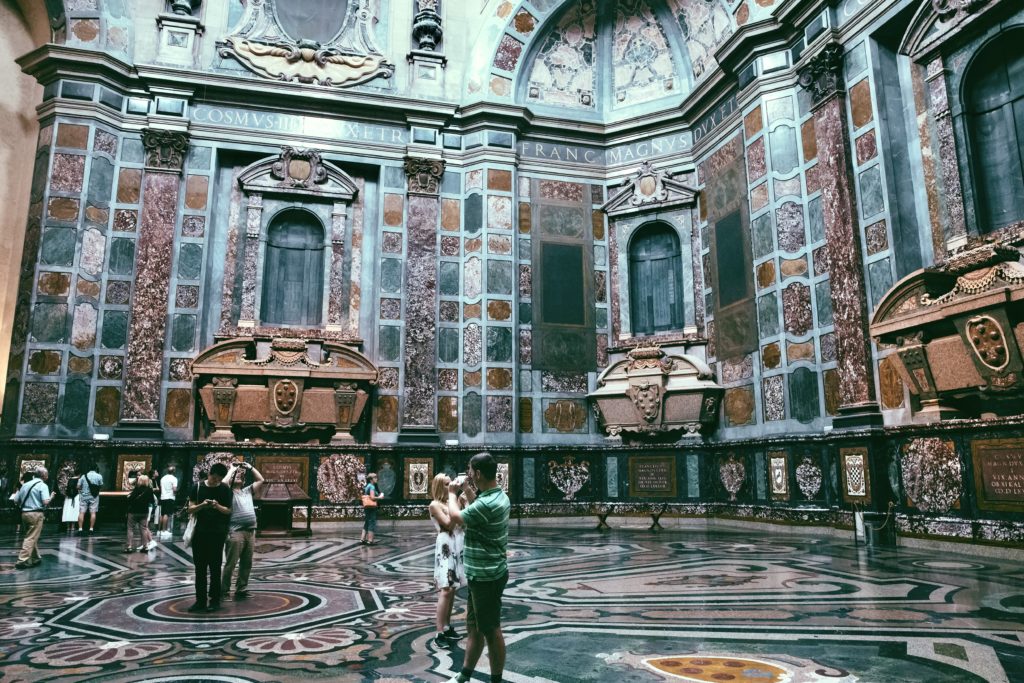
The Medici were an unparalleled and visionary dynasty in Italy.
From the 13th to the 17th centuries, the Medici clan made Florence the center of the Italian Renaissance, patronizing artists like Michelangelo, Botticelli, and Leonardo da Vinci. Lorenzo the Magnificent was perhaps the greatest art patron of all time.
The Medici also showered money on their parish church, the Basilica of San Lorenzo. The Medici Chapels are part of this monumental complex and hold the tombs of the Medici family.
In this guide, I tell you everything to see in the Medici Chapels and give you must know tips for visiting. Here’s a quick snapshot:
- Crypt
- Chapel of the Princes
- New sacristy with 7 Michelangelo sculptures
- Michelangelo’s secret room
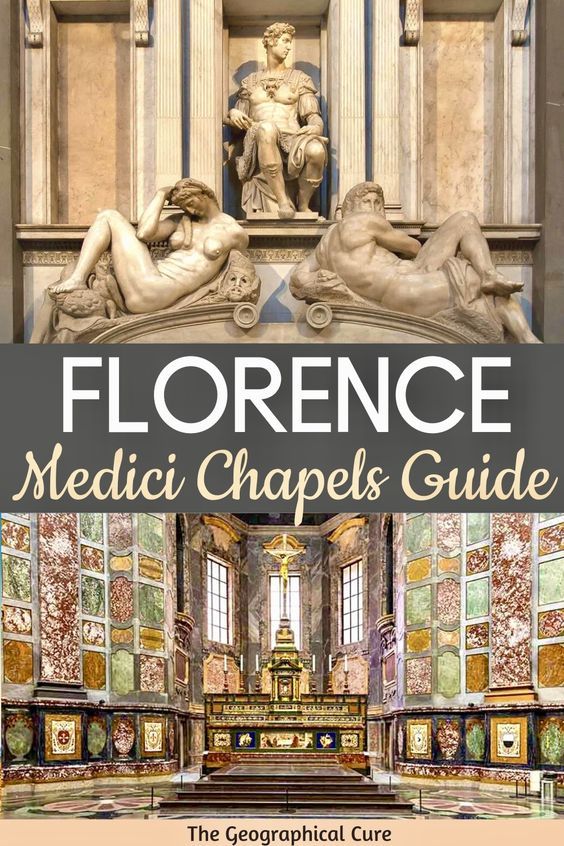
History of the Medici Chapels
In 1513, Giovani di Lorenzo de’ Medici became Pope Leo X. He was the son of the great Lorenzo the Magnificent, the most pivotal figure of the Renaissance.
Leo had big plans for creating a New Sacristy as a funeral mausoleum for his family, including his famous father.
Pope Leo X hired Michelangelo to design and build the Medici chapel. But then the pope promptly died of pneumonia.
Clement VII, the next Medici pope, carried on the work. Michelangelo spent 14 years toiling away on the project.
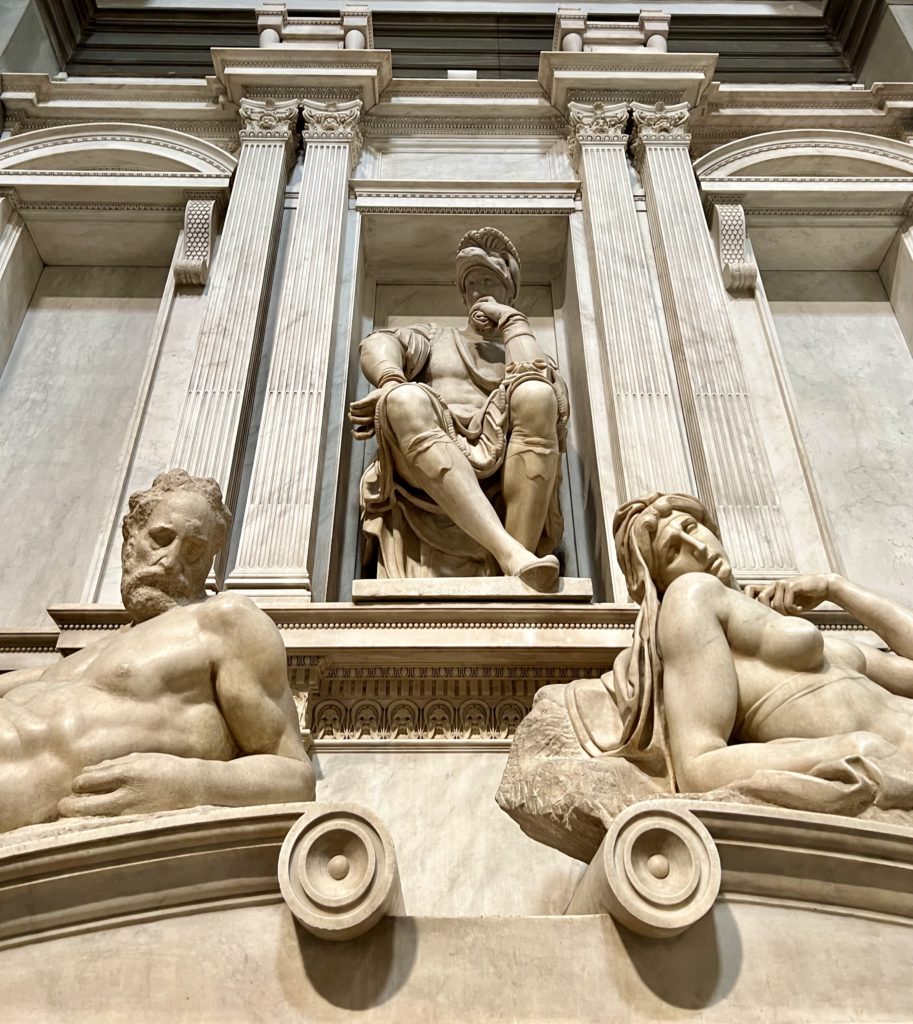
In 1527, Michelangelo returned to Florence to fight with republican forces in a civil war against the Medici.
When the Medici stormed back and regained control of Florence in 1530, Michelangelo took refuge in a secret room in the basement below the New Sacristy. He stayed there until he was pardoned, in 1531, by Pope Clement VII.
READ: History of the Medici
By that time, the most notorious Medici, Alessandro, was head of the Medici family. Michelangelo despised Alessandro and left Florence and the sacristy for good, heading to Rome to work on The Last Judgment fresco of the Sistine Chapel.
Cosimo I, the first Grand Duke, hired the architects Giorgio Vasari and Bartolomeo Ammannati to finish the New Sacristy.
In 1568, Cosimo I also commissioned the grandiose Chapel of the Princes. But construction only began in 1602.
In 1978, a great discovery was made in the New Sacristy. A secret room in a basement was found when a museum director spotted a trap door during renovations.
The room contained 180 charcoal sketches and doodles on the walls. 97 are attributed to Michelangelo, identified because they replicated his known works.
In 2021, the Michelangelo sculptures in the New Sacristy were in dire need of cleaning. Scientists and restorers conducted a secret experiment.
They deployed grime eating bacteria on the marble masterpieces. But it worked and the statues are now bright and meticulously clean.
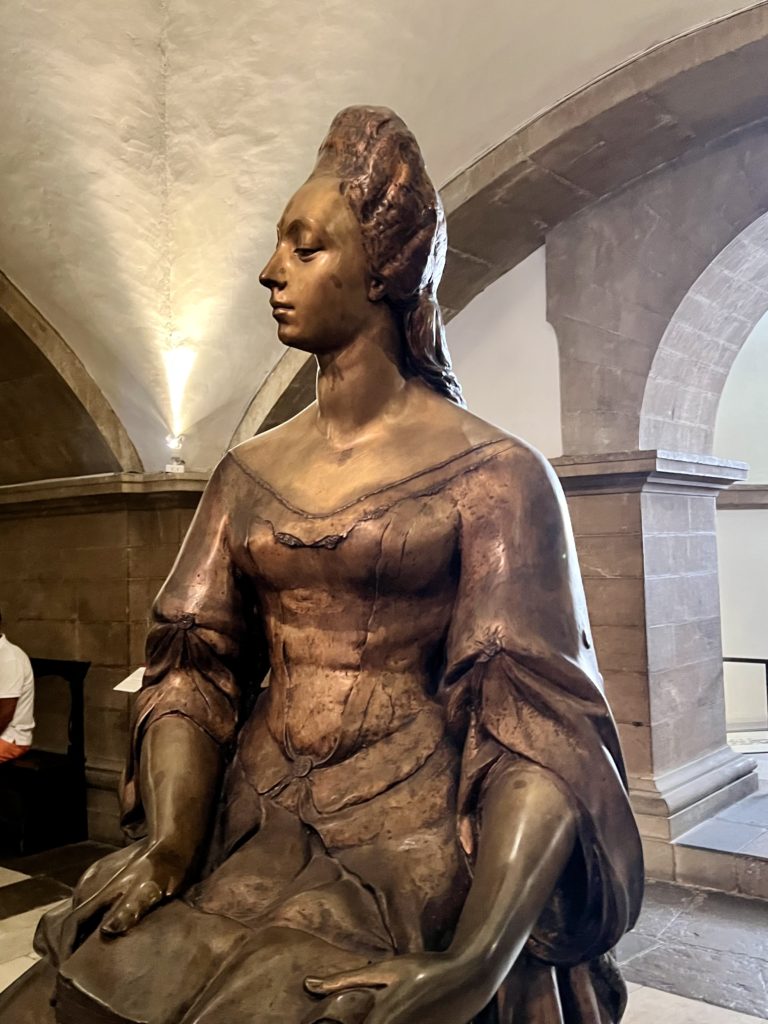
What To See In The Museum Of The Medici Chapels
You enter the museum through the great doorway in Piazza Madonna degli Aldobrandini.
You visit three places: the crypt, the Chapel of the Princes, and Michelangelo’s New Sacristy. That’s the order you’ll see them in as well.
1. Crypt
The crypt houses the remains and tombs of the grand dukes. They are set amid vaults supported by pietra serena pilasters.
You’ll first see glass display cases, which house part of the Treasure of San Lorenzo. They hold extremely precious reliquaries commissioned by the Medici Grand Dukes between the 15th and 18th centuries. They’re made of gold, rock crystal, and silver.
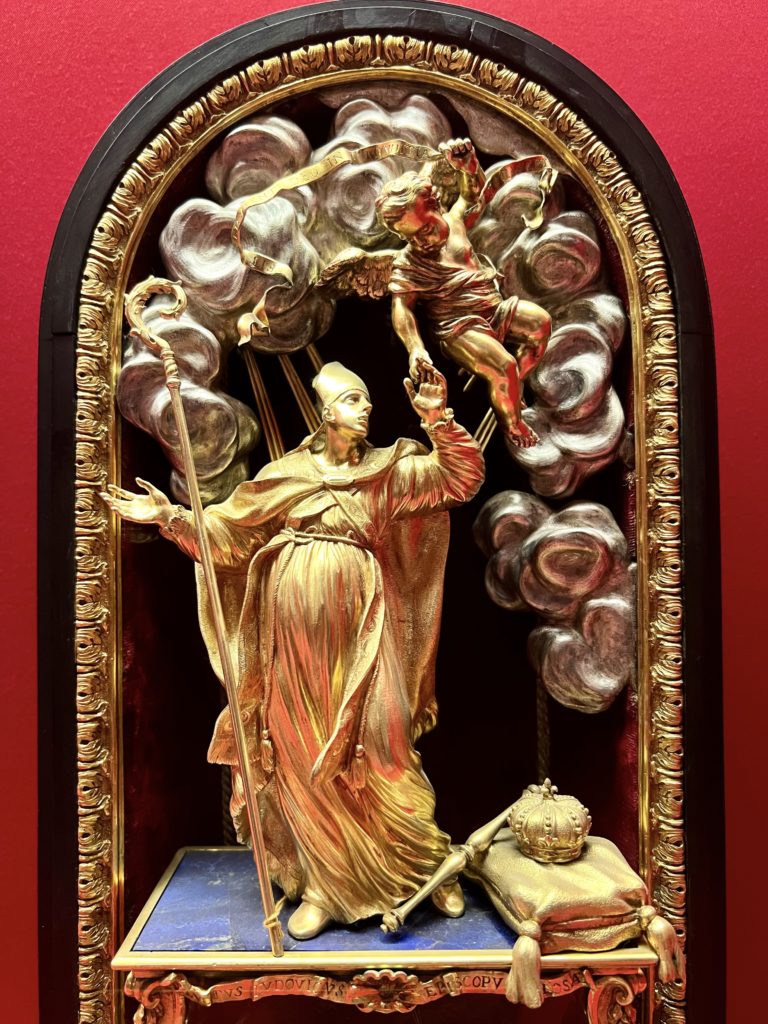
There are gifts to the Medici from Pope Leo X, including a papal headdress studded with pearls, a processional banner with the Medici coat of arms, and a pastoral staff.
As you enter the crypt, there’s a large and beautiful bronze sculpture of Anna Maria Luisa de’ Medici. She was the last of the Medici line, who bequeathed the Medici’s entire collection of art to the state.
She also stipulated that the work had to remain in Florence. Thanks to her, the beautiful works of Botticelli, Piero della Francesca, and Raphael remain in Florence and weren’t sold off to foreign cities.
The crypt also contains the tomb of Cosimo the Elder, the first great historical Medici figure. It was crafted by Andrea del Verrochio.
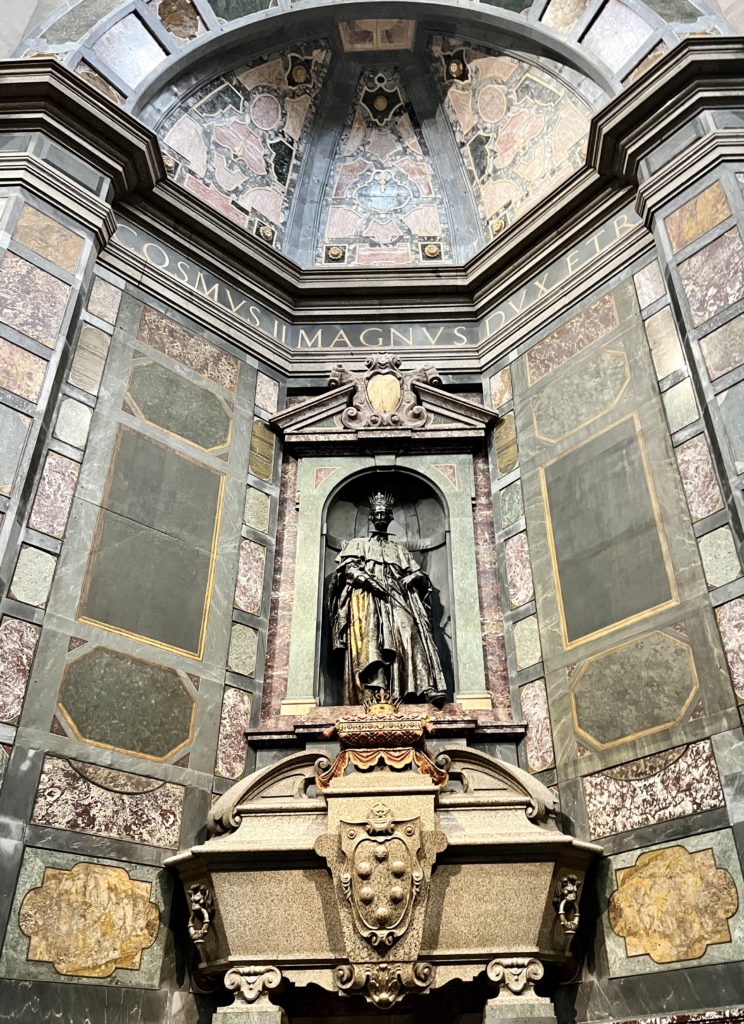
2. The Chapel of the Princes
The Chapel of the Princes is is the main mausoleum for the Medici Family. It’s an unabashedly opulent and grandiose space, a bit outsize compared to the basilica itself.
Cosimo I ruled with absolute power. He wanted his chapel to reflect the authority, wealth, and glory of the Medici dynasty.
After having won a competition, the chapel was designed by Mattteo Nigetti, with input from Giovanni de’ Medici (also an architect).
The chapel walls are clad with polychrome marble and semi-precious stones. They are to be simultaneously valuable and eternal, demonstrating the immortality of the Medici dynasty. No space is left undecorated.
You can watch my video of the chapel:
There are six niches in the walls, which were intended to hold the bronze statues of the Medici grand dukes. Only two of the life size statues were completed, those of Ferdinando I and Cosimo II.
Each niche contains an urn bearing the ducal crown. Below the niches is a baseboard containing the shields of the 16 most important cities under the control of Florence.
The Medici intended to cover the cupola with lapis lazuli. But that never came to fruition.
Instead, the dome has a fresco series by Neo-Classical painter Pietro Benvenuti depicting Bible stories.
The High Renaissance chapel stands in sharp contrast to the minimalist ethic of the earlier basilica and Old Sacristy of the San Lorenzo complex. But the grand dukes loved it, using the chapel as a reception room.
Beginning in 1999, when a marble slab fell to the floor, the chapel underwent two decades of restoration to stabilize the structure. New lighting was also installed, accentuating the beautiful colors of the stones and statuary.
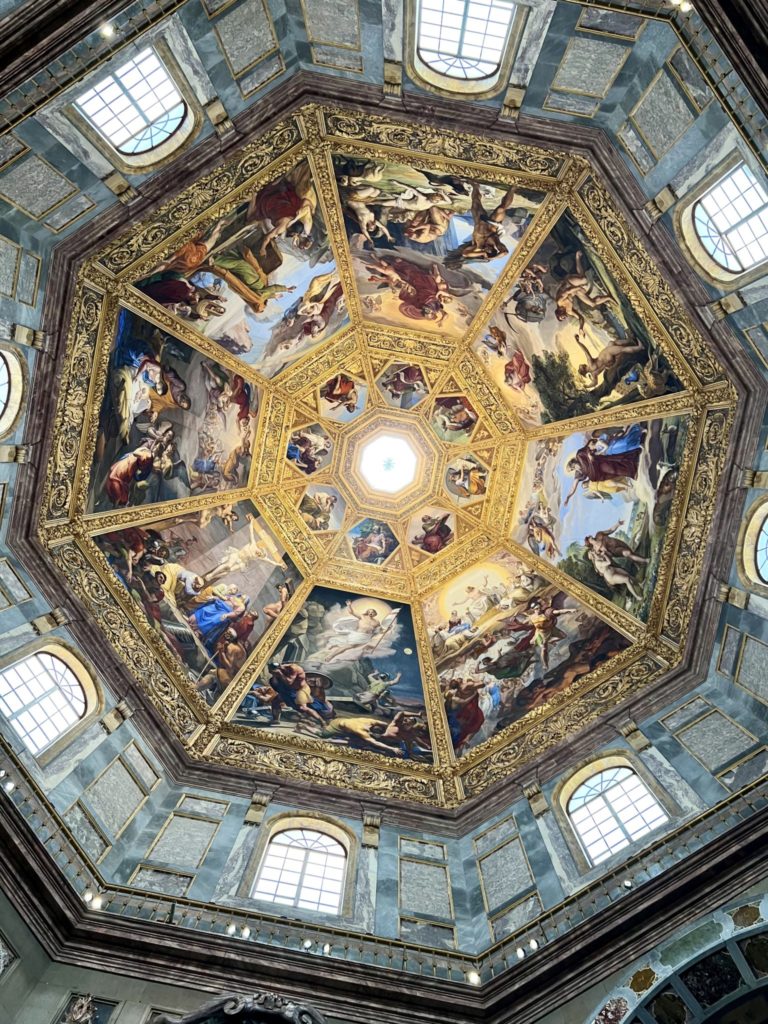
3. Michelangelo’s New Sacristy
Michelangelo’s New Sacristy is the last stop on a visit to the Medici Chapels. It’s a beautiful Renaissance space. In my opinion, this is the main reason to visit the Medici Chapels.
Architecture
The chapel was almost entirely designed and decorated by Michelangelo. He was meant to create frescos as well, but he left for Rome before that could happen.
In designing the New Sacristy, Michelangelo broke away from classical architectural tradition and rules of proportion. He designed a Mannerist space with unusual configurations that subverted classical forms.
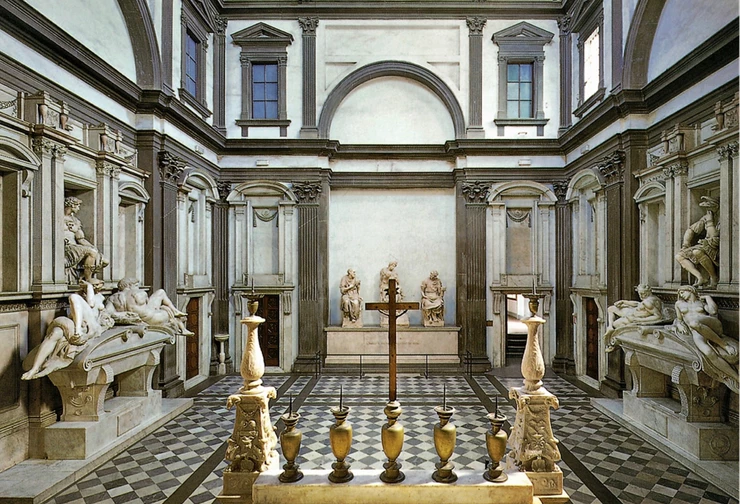
The chapel might be considered “sculpted architecture.” It’s akin to a dramatic theater, intended to exalt the impact of the sculptural groups.
The cupola was modeled after the Pantheon in Rome. The vaulted dome is covered with terracotta shingles. It’s topped with a temple-shaped lantern with a gold ball and cross.
Michelangelo was especially particular about the chapel’s lightening. The windows light up the tomb sculptures at the times of the day they represented.
The New Sacristy has seven tomb sculptures carved by Michelangelo.
Overview Of The Tomb Sculptures
The sculptures are not only beautiful, but full of symbolic meaning. They’re meant to suggest the Platonic ideal of the immortality of the soul.
The tombs were of relatively minor Medici family members. Michelangelo never got around to creating a tomb for the more well known Lorenzo the Magnificent and his brother.
Lorenzo was the third son of Lorenzo the Magnificent. Giuliano was reputedly the inspiration of Nicole Machiavelli’s book, The Prince. They were both leaders in the military and led short lives.
There are sculptures of Lorenzo and Giuliano. Below each tomb are two more sculptures that are allegories of the passage of time.
The allegories were intended to convey the message that time destroys everything earthly, that the days of our lives ineluctably lead to our death. But that the soul lives on.
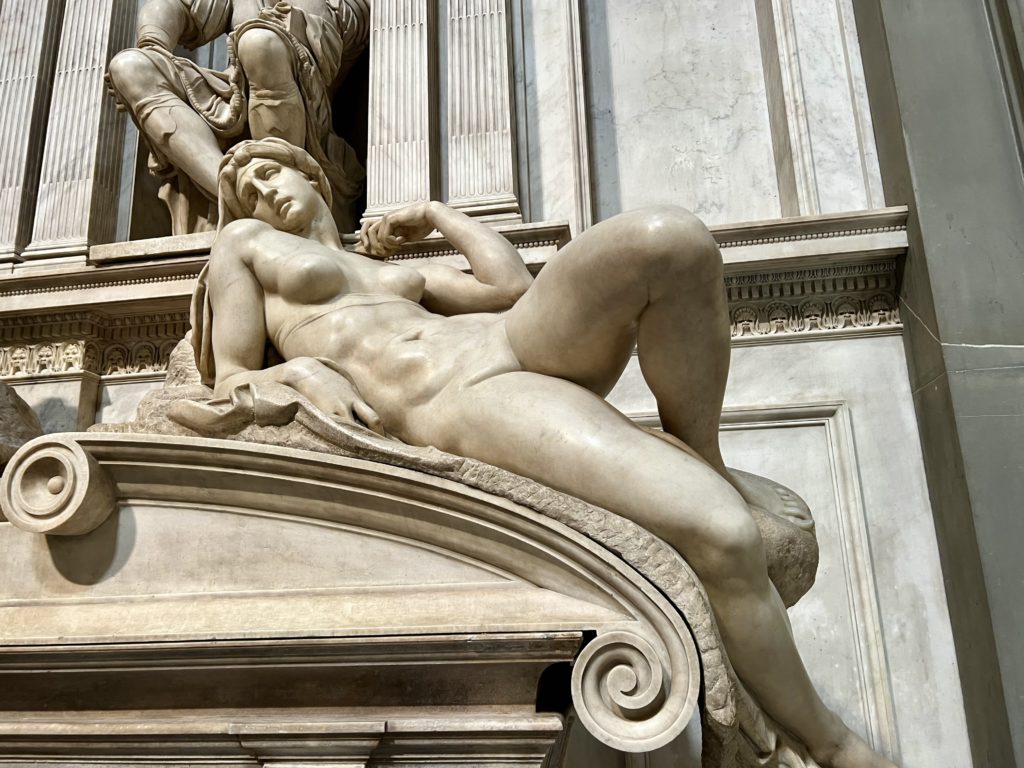
Tomb of Lorenzo
On the tomb of Lorenzo, the effigy at the top shows him as a brooding introvert, whose face remains in shadow. He’s dressed in armor with the staff of command, as if he’s on the eve of battle.
Below him are the sculptures of Dawn and Dusk, suggesting the rhythmic flow of time.
Dawn suggests the emergence of light. Dusk suggests twilight.
Dawn is a female figure who appears to be waking up from a dream. Dusk is a male nude who appears tired from the travails of the day.
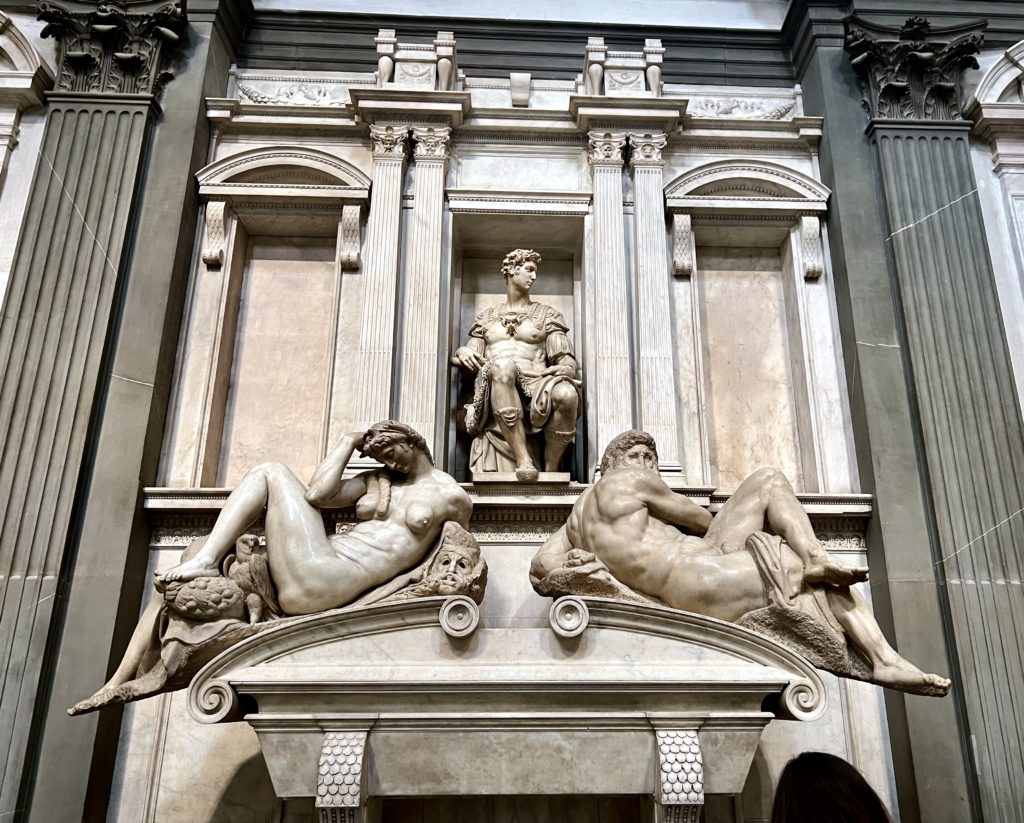
Tomb of Giuliano
On the tomb of Giuliano, Giuliano’s effigy shows him as an extrovert. This is a beautiful sculpture.
It’s one of Michelangelo’s most idealized pieces. I mean, just look at the long elegant neck. The two tomb statues below are allegories of Night and Day.
Night is regarded as one of Michelangelo’s finest works. She’s a young and athletic woman with her recumbent head resting on her right hand.
The sculpture was based on a classical drawing of Leda. It was polished to shine like the moon.
There’s no doubt who she is because of the owl and bag of poppies at her feet. She’s also the only sleeping sculpture.
Night is twisted in an almost impossible way. It’s as if she has extra vertebrae and ribs. She’s more much highly polished and finished compared to Day, whose face is unfinished.
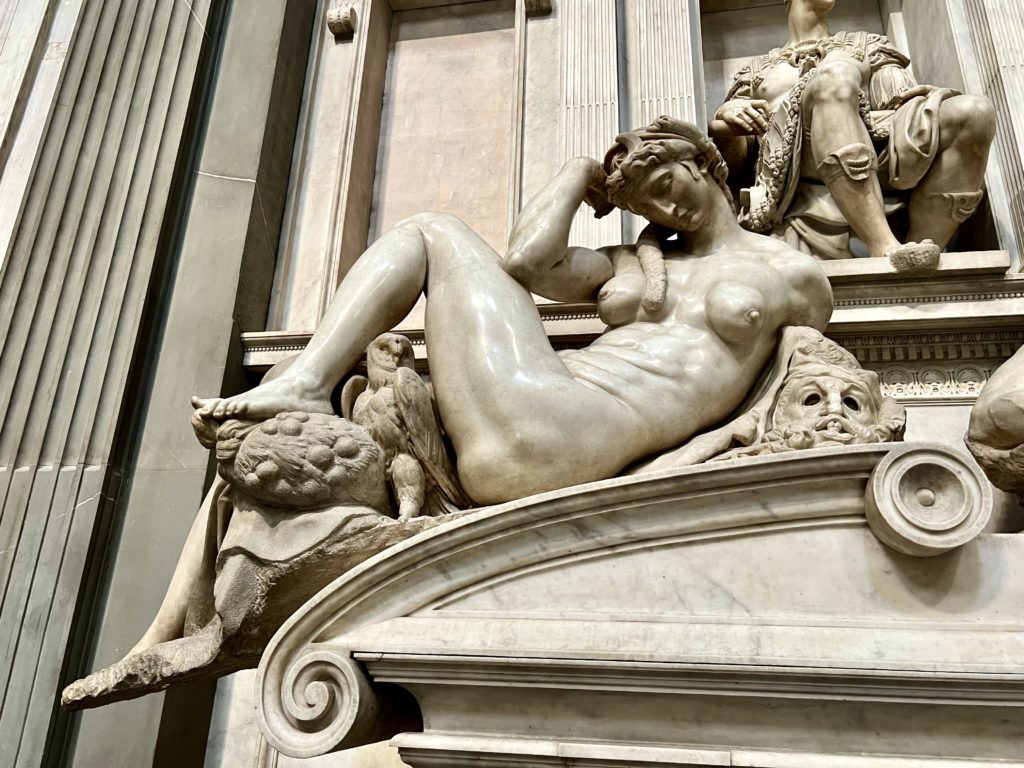
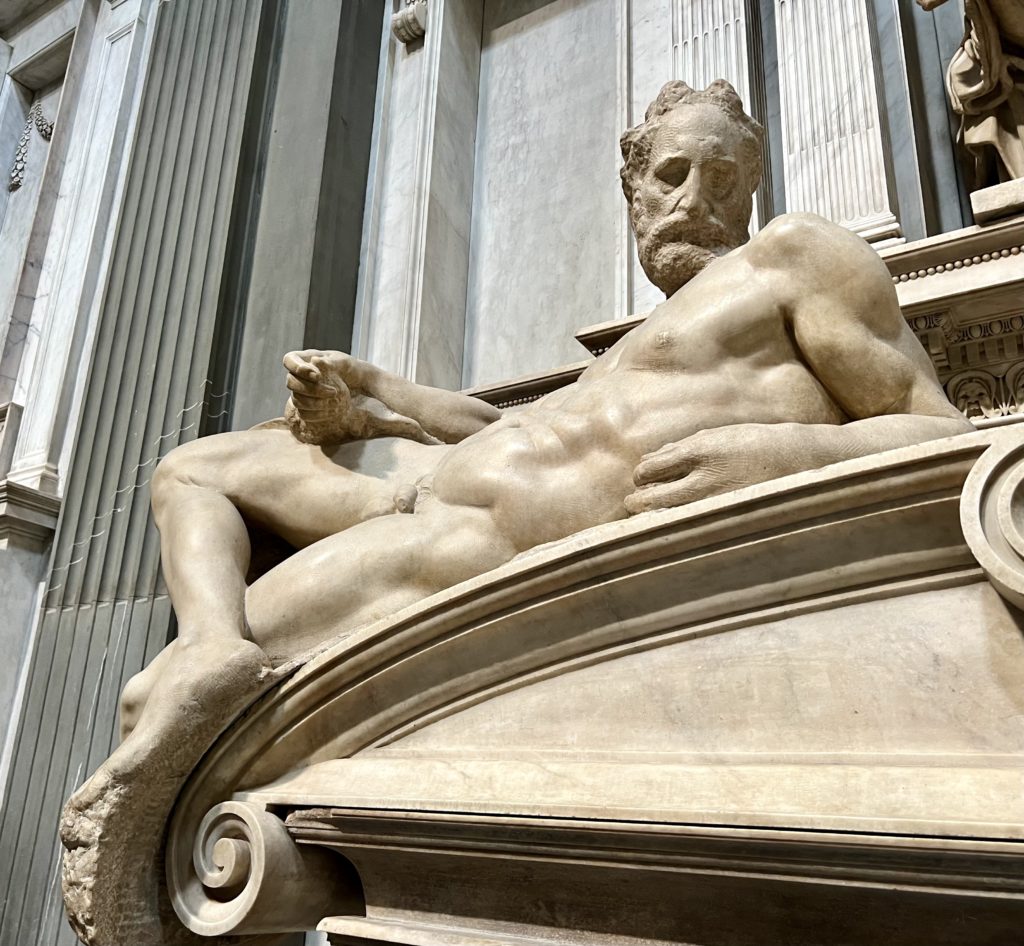
Night is typical of Michelangelo’s women, very muscular and cut. Her breasts look almost like tennis balls put on a man’s body.
Her left breast is somewhat disfigured. One oncologist suggests that Michelangelo may have used a model suffering from breast cancer.
Day is a masculine figure whose face is only roughly finished. He gazes toward us, possibly to suggest dominion.
There’s another unfinished Michelangelo sculpture opposite the altar, Madonna with Child. It’s above a simple tomb for Lorenzo the Magnificent and his brother Giuliano. The intended major project which was never carried out.
Lorenzo died of gout and Giuliano was killed in the Pazzi Conspiracy.
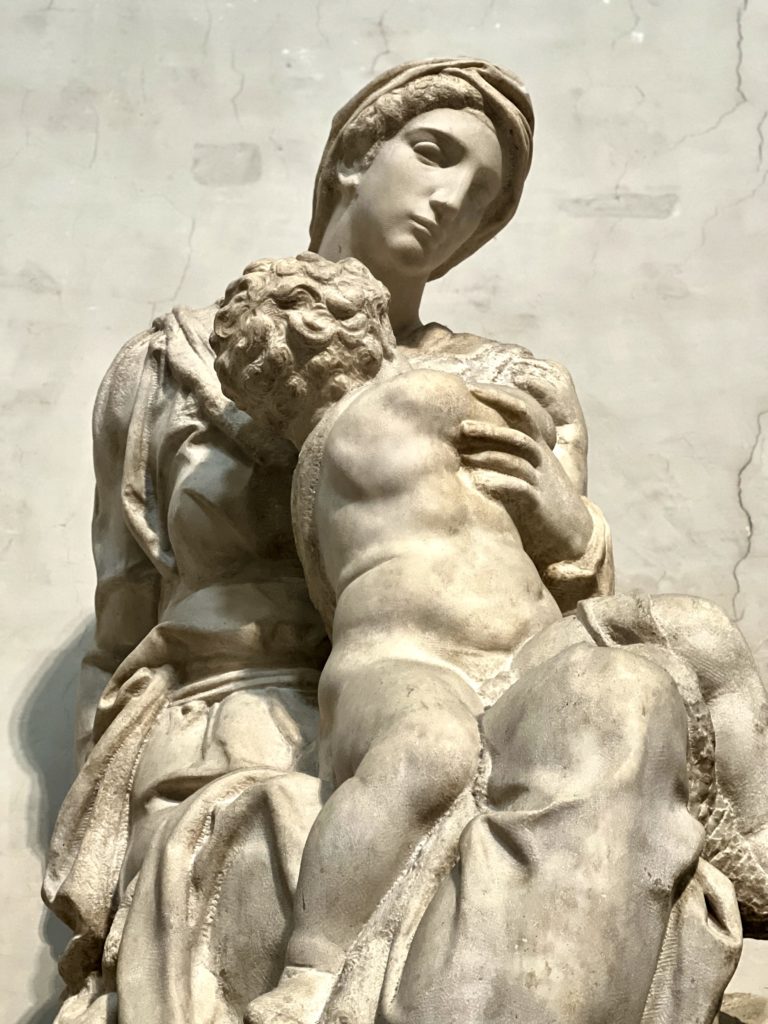
Michelangelo’s Madonna with Child
Michelangelo’s Madonna has a melancholy look on her face. She’s a powerful woman who grips her son in a gesture of possessive love.
The sculpture is almost deviant in its depiction of the pair. Baby Jesus twists in a serpentine fashion backward to nurse. A lactating Jesus near a high altar?!
This piece may originally have been intended for Michelangelo’s Tomb of Julius II. He was working on the chapel and the tomb simultaneously.
Two sculptures of saints flank and turn toward the Madonna. They were carved by Giovani Angelo da Montorsoli and Raffaeollo da Montelupo, pupils of Michelangelo.
Giorgio Vasari had the sculptures installed above the simple tomb in 1554.
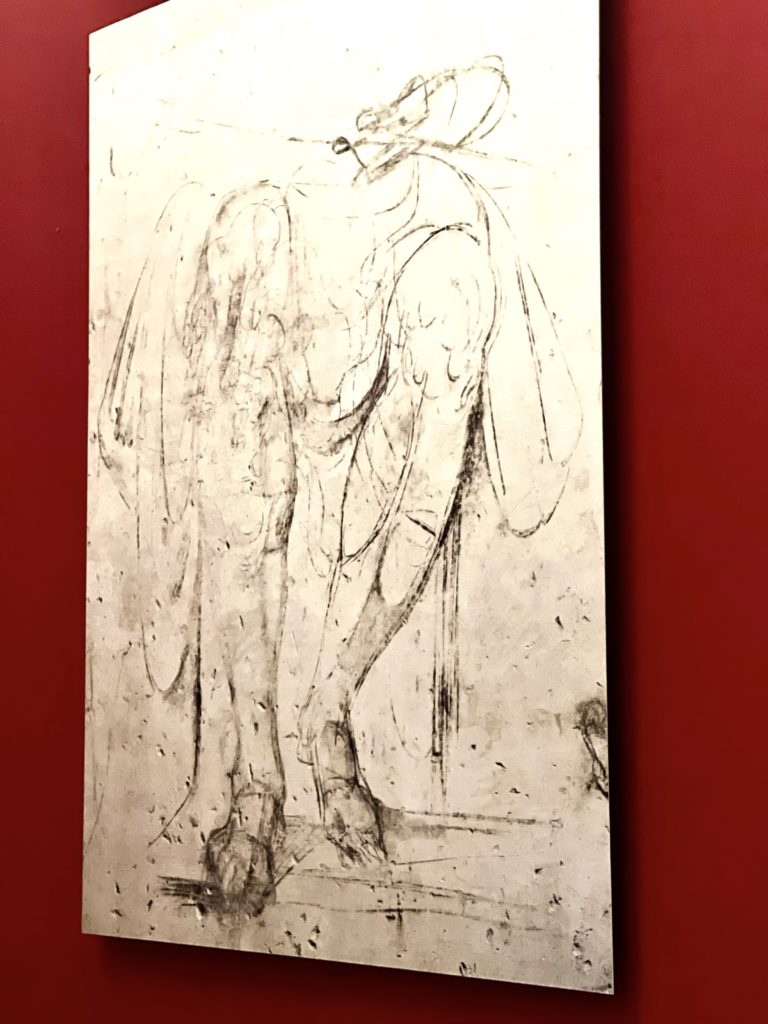
Michelangelo’s Secret Room
As mentioned earlier, the New Sacristy is believed to have been Michelangelo’s hiding place during the Medici’s return to power in 1530. It was hidden for centuries.
In November 2023, the stanza segreta finally opened to the public on a limited basis after being accessible only to scholars for years. Tickets are hard to come by though. If you can’t score one, there’s a video and some of his charcoal drawings on display.
Visits will be in small groups of four, lasting 15 minutes each. To protect the delicate drawings, there will be 45 minute breaks with the lights off between visits.
Tickets cost 32 euros (about $34) and are linked to specific individuals to prevent bulk purchases by tour operators. These tickets also include access to the Medici tombs.
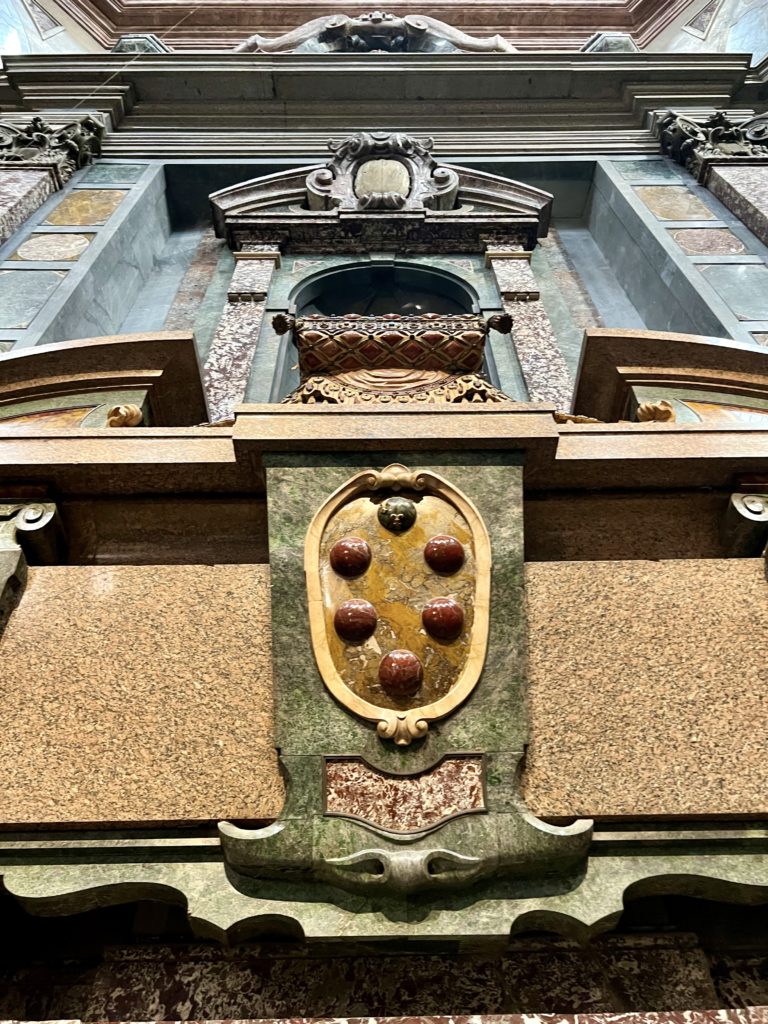
Are The Medici Chapels Worth Visiting?
I think the Medici Chapels are 100% worth visiting, especially if you’re an art history buff or art lover. If you’re a fan of Michelangelo and on the Michelangelo trail in Florence, it’s a must visit attraction.
The chapels will give you a snapshot of Medici history and Michelangelo’s art.
The chapels also don’t take long to visit. You won’t need to spend more than an hour there.
You can pair the Medici Chapels with a visit to the Basilica of San Lorenzo and the San Lorenzo Market. The chapels are also close to the Duomo and the Accademia Gallery. The latter is home to Michelangelo’s famous David sculpture.
Practical Guide & Tips For The Medici Chapels
Address: Piazza di Madonna degli Aldobrandini 6, at the northeast side of the basilica.
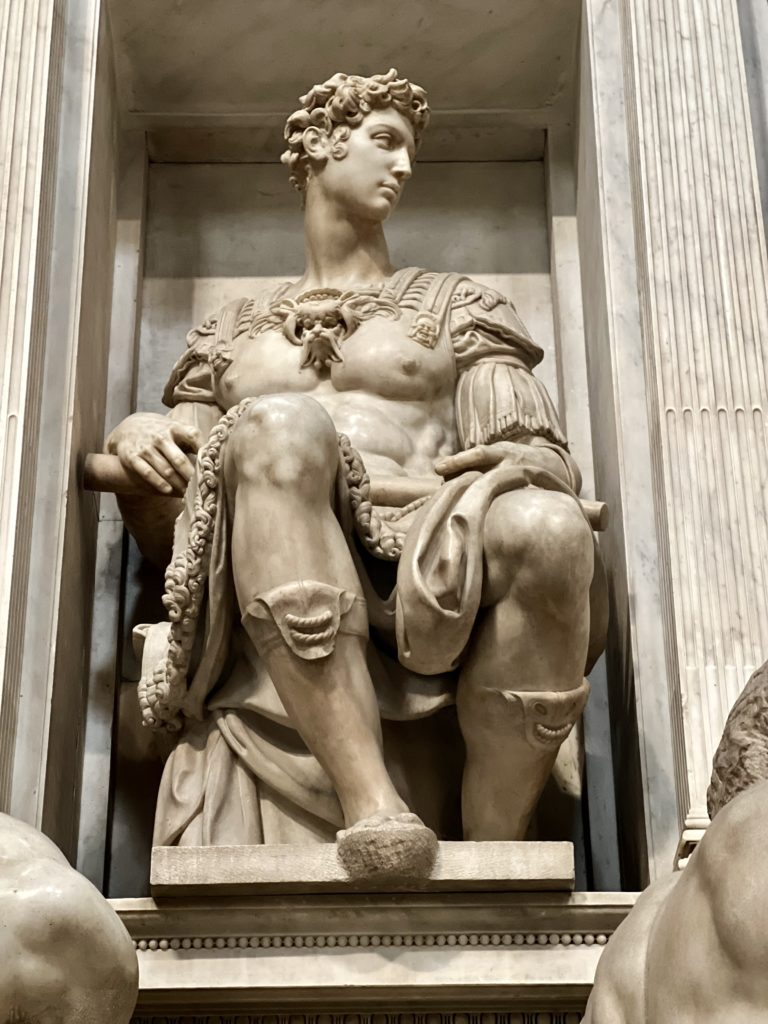
Hours:
The Medici Chapels are open Tuesday through Saturday from 8:15 am to 11:50 pm, closing at 2:50 pm from April to September. Take note of the early closing time when planning your visit.
Entry fee: € 9. The Florence Pass is accepted. You’ll need to make a time slot reservation.
Click here to purchase a ticket with a time slot. These fill up fast, so don’t delay.
Guided Tours:
You can also book a guided tour of the chapels. This isn’t a bad idea because there’s not much explanatory signage.
You can also book a 3 hour guided history tour of the Medici and Michelangelo, which includes skip the line entry to the Medici Chapels and the Accademia Gallery.
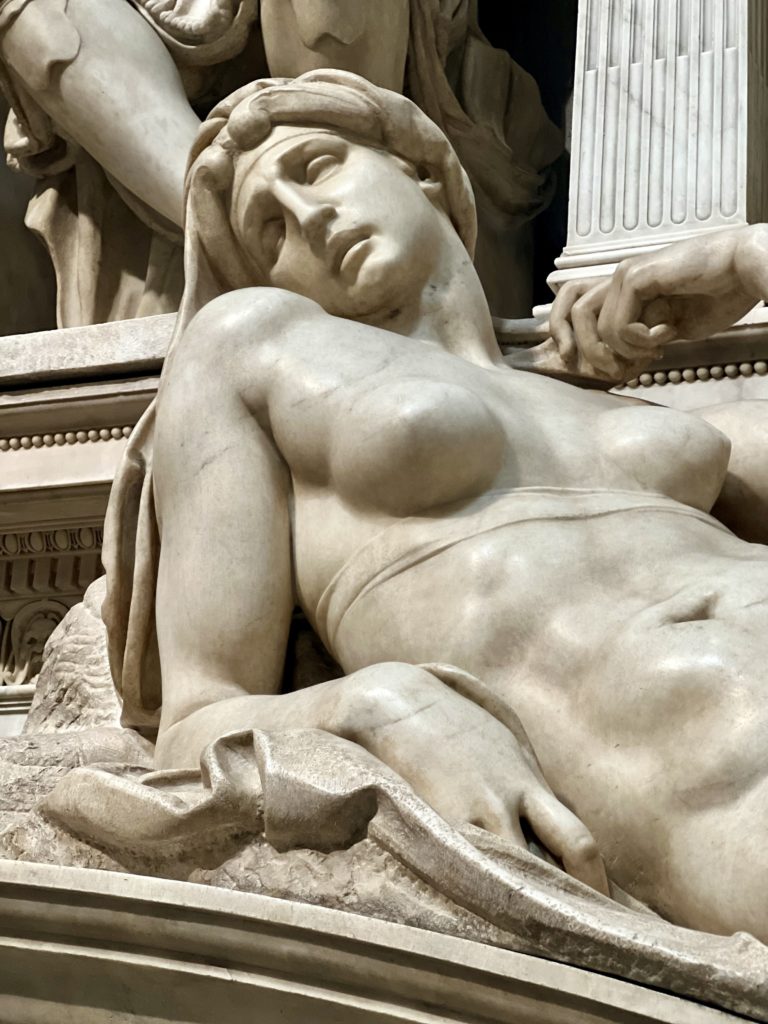
What Does The Medici Chapels Ticket Include?
A ticket for the Medici Chapels gives you access to the New Sacristy, the Chapel of the Princes, and the Medici Crypt.
It does not give you access to the Basilica of San Lorenzo. You need two separate tickets to visit everything in the San Lorenzo complex.
I hope you’ve enjoyed my guide to visiting the Medici Chapels. You may enjoy these other Florence travel guides and resources:
- 1 Day Itinerary for Florence
- 3 Day Itinerary for Florence
- Best Museums in Florence
- Guide to the Uffizi Gallery
- Hidden Gems in Florence
- Best Viewpoints in Florence
- Guide to the Bargello Museum
- Guide to the Pitti Palace
- Guide to the Palazzo Vecchio
- Guide to the Basilica of Santa Croce
- How To See Michelangelo’s David
If you need guide to the Medici Chapels, pin it for later.

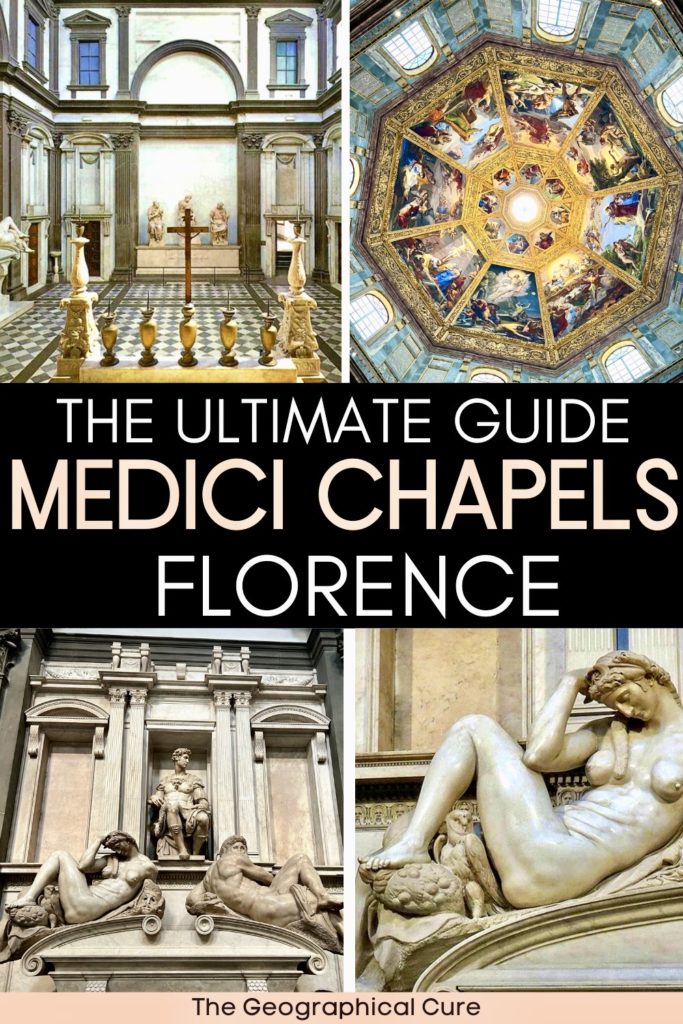
Thank you for an extremely interesting guide to the Medici Chapels. I shall be visiting Florence again for five nights in April this year and am definitely going to spend time in the Chapels. I was not able to see the magnificent works of Michelangelo when previously in Florence.
You will love them! If you are a Michelangelo fan, he has sculptures in the Accademia, Palazzo Vecchio, the Duomo Museum, and Casa Buonarroti.